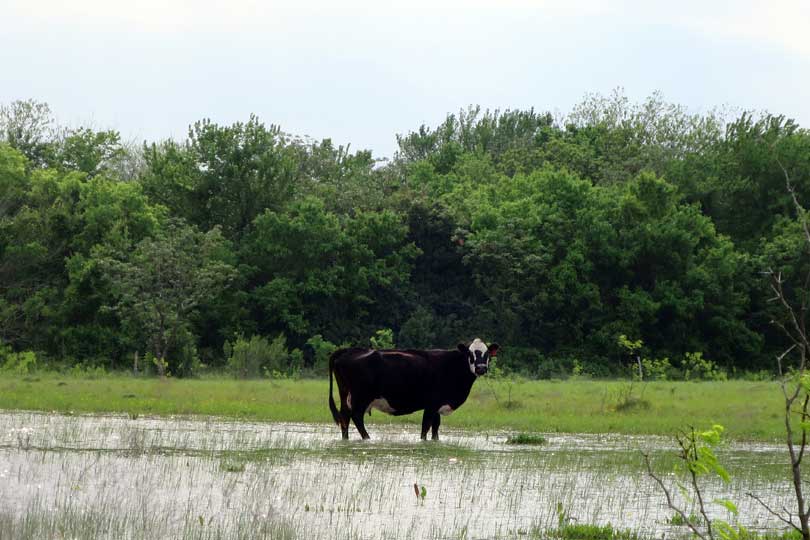A large number of lameness cases in cattle are caused by infection, and recent wet conditions across Texas are adding to the problem.
Dr. Bob Judd, DVM, of Hewitt told the Texas Farm Bureau (TFB) Radio Network that foot rot is the most common infectious condition causing lameness in cattle. Foot rot can be caused by multiple bacteria that are present in the soil and manure. He said the infection generally begins between the toes, and it’s usually subsequent to damage between the toes from sharp objects.
Wet conditions decrease the integrity of the tissues between the toes and soften the tissue, making it easier for objects to impact the skin and allow infection to enter. After the bacteria enter the skin, a painful infection occurs, and the infection destroys the tissue between the toes. These infections can be so severe, Dr. Judd said, that the infection can enter the joint at the level of the hoof.
“These cases are extremely difficult to treat,” Dr. Judd said. “So with all the rain we are having, if you see a cow limping, get her up in the chute, and pick her foot up to see if she has foot rot or another infection causing the problem before the infection can cause permanent damage.”
Weight gain is significantly reduced when grazing cattle contract foot rot. One three-year study in 1993 reported that affected steers gained 2.3 lbs. per day, while steers not affected gained 2.76 lbs. per day.
Infected feet serve as the primary source of infection for other cattle by contaminating the environment. It is estimated the bacteria can survive off the animal from one to 10 months.
Animal health officials said treatment of foot rot is usually successful, especially when caught and started early in the disease course. Treatment should always begin with cleaning and examining the foot to establish that lameness is actually due to foot rot and not another condition. At this point, a topical treatment can be applied. Some very mild cases will respond to topical therapy only. Most cases require the use of systemic (injectable) antimicrobial therapy.
If at all possible, affected animals should be kept in dry areas until healed. If improvement is not evident within three to four days, it may mean the infection has invaded the deeper tissues. Animal health officials advised if infections do not respond to initial treatments, the situation should be re-evaluated by a veterinarian soon.

